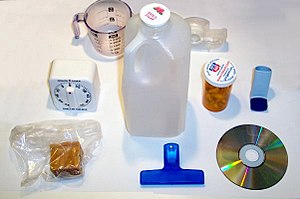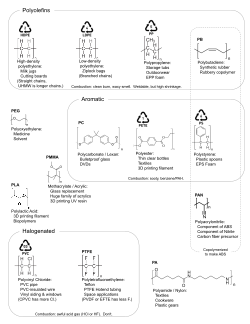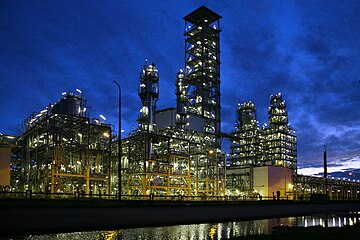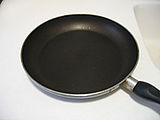Plastic
- Afrikaans
- Alemannisch
- العربية
- Aragonés
- অসমীয়া
- Asturianu
- Avañe'ẽ
- Azərbaycanca
- تۆرکجه
- Basa Bali
- বাংলা
- Banjar
- Bân-lâm-gú
- Башҡортса
- Беларуская
- Беларуская (тарашкевіца)
- भोजपुरी
- Български
- Boarisch
- Bosanski
- Brezhoneg
- Català
- Čeština
- Cymraeg
- Dansk
- الدارجة
- Deutsch
- Eesti
- Ελληνικά
- Español
- Esperanto
- Estremeñu
- Euskara
- فارسی
- Français
- Frysk
- Gaeilge
- Gàidhlig
- Galego
- 贛語
- 한국어
- Հայերեն
- हिन्दी
- Hrvatski
- Ido
- Ilokano
- Bahasa Indonesia
- Interlingua
- IsiXhosa
- IsiZulu
- Íslenska
- Italiano
- עברית
- Jawa
- Kabɩyɛ
- ಕನ್ನಡ
- Қазақша
- Kernowek
- Kiswahili
- Kreyòl ayisyen
- Kriyòl gwiyannen
- Kurdî
- Кыргызча
- ລາວ
- Latina
- Latviešu
- Lëtzebuergesch
- Lietuvių
- Limburgs
- Lombard
- Magyar
- Madhurâ
- Македонски
- Malagasy
- മലയാളം
- मराठी
- مازِرونی
- Bahasa Melayu
- Minangkabau
- 閩東語 / Mìng-dĕ̤ng-ngṳ̄
- Mirandés
- Монгол
- မြန်မာဘာသာ
- Na Vosa Vakaviti
- Nederlands
- नेपाली
- नेपाल भाषा
- 日本語
- Нохчийн
- Nordfriisk
- Norsk bokmål
- Norsk nynorsk
- Occitan
- Oʻzbekcha / ўзбекча
- ਪੰਜਾਬੀ
- پنجابی
- Patois
- Polski
- Português
- Română
- Runa Simi
- Русский
- Scots
- Shqip
- Sicilianu
- සිංහල
- Simple English
- سنڌي
- Slovenčina
- Slovenščina
- Soomaaliga
- کوردی
- Српски / srpski
- Srpskohrvatski / српскохрватски
- Sunda
- Suomi
- Svenska
- Tagalog
- தமிழ்
- Татарча / tatarça
- తెలుగు
- ไทย
- ᏣᎳᎩ
- Türkçe
- Українська
- اردو
- Vèneto
- Vepsän kel’
- Tiếng Việt
- Walon
- West-Vlams
- Winaray
- 吴语
- ייִדיש
- 粵語
- Žemaitėška
- 中文

Plastics are a wide range of
9.2 billion tonnes of plastic are estimated to have been made between 1950 and 2017, more than half of which has been produced since 2004. In 2020, 400 million tonnes of plastic were produced.[2] If global trends on plastic demand continue, it is estimated that by 2050 annual global plastic production will reach over 1.1 billion tonnes.
The success and dominance of plastics starting in the early 20th century has caused widespread environmental problems,[3] due to their slow decomposition rate in natural ecosystems. Most plastic produced has not been reused, or is incapable of reuse, either being captured in landfills or persisting in the environment as plastic pollution and microplastics. Plastic pollution can be found in all the world's major water bodies, for example, creating garbage patches in all of the world's oceans and contaminating terrestrial ecosystems. Of all the plastic discarded so far, some 14% has been incinerated and less than 10% has been recycled.[2]
In developed economies, about a third of plastic is used in packaging and roughly the same in buildings in applications such as piping, plumbing or vinyl siding.[4] Other uses include automobiles (up to 20% plastic[4]), furniture, and toys.[4] In the developing world, the applications of plastic may differ; 42% of India's consumption is used in packaging.[4] In the medical field, polymer implants and other medical devices are derived at least partially from plastic. Worldwide, about 50 kg of plastic is produced annually per person, with production doubling every ten years.
The world's first fully synthetic plastic was
Etymology
The word plastic derives from the Greek πλαστικός (plastikos) meaning "capable of being shaped or molded," and in turn from πλαστός (plastos) meaning "molded."[8] As a noun the word most commonly refers to the solid products of petrochemical-derived manufacturing.[9]
The noun plasticity refers specifically here to the deformability of the materials used in the manufacture of plastics. Plasticity allows molding, extrusion or compression into a variety of shapes: films, fibers, plates, tubes, bottles and boxes, among many others. Plasticity also has a technical definition in materials science outside the scope of this article referring to the non-reversible change in form of solid substances.
Structure
Properties and classifications
Plastics are usually classified by the chemical structure of the polymer's backbone and side chains. Important groups classified in this way include the
Thermoplastics and thermosetting polymers

One important classification of plastics is the degree to which the chemical processes used to make them are reversible or not.
Thermoplastics do not undergo chemical change in their composition when heated and thus can be molded repeatedly. Examples include polyethylene (PE), polypropylene (PP), polystyrene (PS), and polyvinyl chloride (PVC).[13]
Thermosets, or thermosetting polymers, can melt and take shape only once: after they have solidified, they stay solid.[14] If reheated, thermosets decompose rather than melt. In the thermosetting process, an irreversible chemical reaction occurs. The vulcanization of rubber is an example of this process. Before heating in the presence of sulfur, natural rubber (polyisoprene) is a sticky, slightly runny material; after vulcanization, the product is dry and rigid.
Amorphous plastics and crystalline plastics
Many plastics are completely
Conductive polymers
Biodegradable plastics and bioplastics
Biodegradable plastics
Bioplastics
While most plastics are produced from petrochemicals,
Plastic industry
The plastic industry includes the global production,
Production
Between 1950 and 2017, 9.2 billion tonnes of plastic are estimated to have been made, with more than half this having been produced since 2004. Since the birth of the plastic industry in the 1950s, global production has increased enormously, reaching 400 million tonnes a year in 2021; this is up from 381 million metric tonnes in 2015 (excluding additives).[2][23] From the 1950s, rapid growth occurred in the use of plastics for packaging, in building and construction, and in other sectors.[2] If global trends on plastic demand continue, it is estimated that by 2050 annual global plastic production will exceed 1.1 billion tonnes annually.[2]
- Polypropylene plants
-
A SOCAR Polymer polypropylene plant in Sumgayit, Azerbaijan
Graphs are unavailable due to technical issues. There is more info on
financial crisis of 2007–2008 which caused brief lowering of plastic production.Plastics are produced in chemical plants by the monomers); which are almost always petrochemical in nature. Such facilities are normally large and are visually similar to oil refineries, with sprawling pipework running throughout. The large size of these plants allows them to exploit economies of scale. Despite this, plastic production is not particularly monopolized, with about 100 companies accounting for 90% of global production.[24] This includes a mixture of private and state-owned enterprises. Roughly half of all production takes place in East Asia, with China being the largest single producer. Major international producers include:
Historically, Europe and North America have dominated global plastics production. However, since 2010 Asia has emerged as a significant producer, with China accounting for 31% of total plastic resin production in 2020.[25] Regional differences in the volume of plastics production are driven by user demand, the price of fossil fuel feedstocks, and investments made in the petrochemical industry. For example, since 2010 over US$200 billion has been invested in the United States in new plastic and chemical plants, stimulated by the low cost of raw materials. In the European Union (EU), too, heavy investments have been made in the plastics industry, which employs over 1.6 million people with a turnover of more than 360 billion euros per year. In China in 2016 there were over 15,000 plastic manufacturing companies, generating more than US$366 billion in revenue.[2] In 2017, the global plastics market was dominated by thermoplastics– polymers that can be melted and recast. Thermoplastics include polyethylene (PE), polyethylene terephthalate (PET), polypropylene (PP), polyvinyl chloride (PVC), polystyrene (PS) and synthetic fibres, which together represent 86% of all plastics.[2] Compoundingthermosoftening materialPlastic is not sold as a pure unadulterated substance, but is instead mixed with various chemicals and other materials, which are collectively known as additives. These are added during the high impact polystyrene . Large companies may do their own compounding prior to production, but some producers have it done by a third party. Companies that specialize in this work are known as Compounders.
The compounding of thermosetting plastic is relatively straightforward; as it remains liquid until it is cured into its final form. For thermosoftening materials, which are used to make the majority of products, it is necessary to melt the plastic in order to mix-in the additives. This involves heating it to anywhere between 150–320 °C (300–610 °F). Molten plastic is viscous and exhibits laminar flow, leading to poor mixing. Compounding is therefore done using extrusion equipment, which is able to supply the necessary heat and mixing to give a properly dispersed product. The concentrations of most additives are usually quite low, however high levels can be added to create homogeneous final product. This can be cheaper than working with a fully compounded material and is particularly common for the introduction of colour.
ConvertingCompanies that produce finished goods are known as converters (sometimes processors). The vast majority of plastics produced worldwide are thermosoftening and must be heated until molten in order to be molded. Various sorts of extrusion equipment exist which can then form the plastic into almost any shape.
For thermosetting materials the process is slightly different, as the plastics are liquid to begin with and but must be cured to give solid products, but much of the equipment is broadly similar. The most commonly produced plastic consumer products include packaging made from LDPE (e.g. bags, containers, food packaging film), containers made from HDPE (e.g. milk bottles, shampoo bottles, ice cream tubs), and PET (e.g. bottles for water and other drinks). Together these products account for around 36% of plastics use in the world. Most of them (e.g. disposable cups, plates, cutlery, takeaway containers, carrier bags) are used for only a short period, many for less than a day. The use of plastics in building and construction, textiles, transportation and electrical equipment also accounts for a substantial share of the plastics market. Plastic items used for such purposes generally have longer life spans. They may be in use for periods ranging from around five years (e.g. textiles and electrical equipment) to more than 20 years (e.g. construction materials, industrial machinery).[2] Plastic consumption differs among countries and communities, with some form of plastic having made its way into most people's lives. North America (i.e. the North American Free Trade Agreement or NAFTA region) accounts for 21% of global plastic consumption, closely followed by China (20%) and Western Europe (18%). In North America and Europe there is high per capita plastic consumption (94 kg and 85 kg/capita/year, respectively). In China there is lower per capita consumption (58 kg/capita/year), but high consumption nationally because of its large population.[2] Types of plasticsCommodity plastics Around 70% of global production is concentrated in six major polymer types, the so-called commodity plastics. Unlike most other plastics these can often be identified by their resin identification code (RIC):
biodegradability , are ultimately attributable to commodity plastics.
A huge number of plastics exist beyond the commodity plastics, with many having exceptional properties.
Engineering plasticsEngineering plastics are more robust and are used to make products such as vehicle parts, building and construction materials, and some machine parts. In some cases they are polymer blends formed by mixing different plastics together (ABS, HIPS etc.). Engineering plastics can replace metals in vehicles, lowering their weight and improving fuel efficiency by 6–8%. Roughly 50% of the volume of modern cars is made of plastic, but this only accounts for 12–17% of the vehicle weight.[28]
High-performance plasticsHigh-performance plastics are usually expensive, with their use limited to specialised applications which make use of their superior properties.
Gallery
ApplicationsThe largest application for plastics is as packaging materials, but they are used in a wide range of other sectors, including: construction (pipes, gutters, door and windows), textiles ( wing mirrors), electronics (phones, computers, televisions) and as machine parts.[23]
AdditivesAdditives are chemicals blended into plastics to change their performance or appearance, making it possible to alter the properties of plastics to better suit their intended applications.[31][32] Additives are therefore one of the reasons why plastic is used so widely.[33] Plastics are composed of chains of polymers. Many different chemicals are used as plastic additives. A randomly chosen plastic product generally contains around 20 additives. The identities and concentrations of additives are generally not listed on products.[2] In the EU, over 400 additives are used in high volumes. LeachingAdditives may be weakly bound to the polymers or react in the polymer matrix. Although additives are blended into plastic they remain chemically distinct from it, and can gradually leach back out during normal use, when in landfills, or following improper disposal in the environment.[36] Additives may also degrade to form other toxic molecules. Plastic fragmentation into microplastics and nanoplastics can allow chemical additives to move in the environment far from the point of use. Once released, some additives and derivatives may persist in the environment and bioaccumulate in organisms. They can have adverse effects on human health and biota. A recent review by the United States Environmental Protection Agency (US EPA) revealed that out of 3,377 chemicals potentially associated with plastic packaging and 906 likely associated with it, 68 were ranked by ECHA as "highest for human health hazards" and 68 as "highest for environmental hazards".[2] RecyclingMain article: Plastic recycling
As additives change the properties of plastics they have to be considered during recycling. Presently, almost all recycling is performed by simply remelting and reforming used plastic into new items. Additives present risks in recycled products, as they are difficult to remove. When plastic products are recycled, it is highly likely that the additives will be integrated into the new products. Waste plastic, even if it is all of the same polymer type, will contain varying types and amounts of additives. Mixing these together can give a material with inconsistent properties, which can be unappealing to industry. For example, mixing different coloured plastics with different plastic colorants together can produce a discoloured or brown material and for this reason plastic is usually sorted by both polymer type and color before recycling.[2] Absence of transparency and reporting across the value chain often results in lack of knowledge concerning the chemical profile of the final products. For example, products containing brominated flame retardants have been incorporated into new plastic products. Flame retardants are a group of chemicals used in electronic and electrical equipment, textiles, furniture and construction materials which should not be present in food packaging or child care products. A recent study found brominated dioxins as unintentional contaminants in toys made from recycled plastic electronic waste that contained brominated flame retardants. Brominated dioxins have been found to exhibit toxicity similar to that of chlorinated dioxins. They can have negative developmental effects and negative effects on the nervous system and interfere with mechanisms of the endocrine system.[2] Health effectsMany of the controversies associated with plastics actually relate to their additives, as some compounds can be persistent, phthalates are an ongoing area of public concern. Additives can also be problematic if waste is burned, especially when burning is uncontrolled or takes place in low- technology incinerators, as is common in many developing countries. Incomplete combustion can cause emissions of hazardous substances such as acid gases and ash which can contain persistent organic pollutants (POPs) such as dioxins.[2]
A number of additives identified as hazardous to humans and/or the environment are regulated internationally. The Stockholm Convention on Persistent Organic Pollutants (POPs) is a global treaty to protect human health and the environment from chemicals that remain intact in the environment for long periods, become widely distributed geographically, accumulate in the fatty tissue of humans and wildlife, and have harmful impacts on human health or on the environment.[2] Other additives proven to be harmful such as cadmium, chromium, lead and mercury (regulated under the Minamata Convention on Mercury), which have previously been used in plastic production, are banned in many jurisdictions. However they are still routinely found in some plastic packaging including food packaging. The use of the additive bisphenol A (BPA) in plastic baby bottles is banned in many parts of the world, but is not restricted in some low-income countries.[2] In 2023, plasticosis, a new disease caused solely by plastics, was discovered in seabirds. The birds identified as having the disease have scarred digestive tracts from ingesting plastic waste.[39] "When birds ingest small pieces of plastic, they found, it inflames the digestive tract. Over time, the persistent inflammation causes tissues to become scarred and disfigured, affecting digestion, growth and survival."[40] Types of additive
ToxicityPure plastics have low toxicity due to their insolubility in water, and because they have a large molecular weight, they are biochemically inert. Plastic products contain a variety of additives, however, some of which can be toxic. While a finished plastic may be non-toxic, the monomers used in the manufacture of its parent polymers may be toxic. In some cases, small amounts of those chemicals can remain trapped in the product unless suitable processing is employed. For example, the World Health Organization's International Agency for Research on Cancer (IARC) has recognized vinyl chloride, the precursor to PVC, as a human carcinogen.[43] Bisphenol A (BPA)See also: Health effects of Bisphenol A
Some plastic products degrade to chemicals with volatile organic compounds present in new car smell. The EU has a permanent ban on the use of phthalates in toys. In 2009, the US government banned certain types of phthalates commonly used in plastic.[48]
Environmental effects Because the chemical structure of most plastics renders them durable, they are resistant to many natural degradation processes. Much of this material may persist for centuries or longer, given the demonstrated persistence of structurally similar natural materials such as amber. There are differing estimates of how much plastic waste has been produced in the last century. By one estimate, one billion tons of plastic waste have been discarded since the 1950s.[49] Others estimate a cumulative human production of 8.3 billion tons of plastic, of which 6.3 billion tons is waste, with only 9% getting recycled.[50] It is estimated that this waste is made up of 81% polymer resin, 13% polymer fibres and 32% additives. In 2018 more than 343 million tonnes of plastic waste were generated, 90% of which was composed of post-consumer plastic waste (industrial, agricultural, commercial and municipal plastic waste). The rest was pre-consumer waste from resin production and manufacturing of plastic products (e.g. materials rejected due to unsuitable colour, hardness, or processing characteristics).[2] The Ocean Conservancy reported that China, Indonesia, Philippines, Thailand, and Vietnam dump more plastic into the sea than all other countries combined.[51] The rivers Yangtze, Indus, Yellow, Hai, Nile, Ganges, Pearl, Amur, Niger, and Mekong "transport 88% to 95% of the global [plastics] load into the sea."[52][53][verify quote punctuation] The presence of plastics, particularly microplastics, within the food chain is increasing. In the 1960s microplastics were observed in the guts of seabirds, and since then have been found in increasing concentrations.[54] The long-term effects of plastics in the food chain are poorly understood. In 2009 it was estimated that 10% of modern waste was plastic,[55] although estimates vary according to region.[54] Meanwhile, 50% to 80% of debris in marine areas is plastic.[54] Plastic is often used in agriculture. There is more plastic in the soil than in the oceans. The presence of plastic in the environment hurts ecosystems and human health.[56] Research on the environmental impacts has typically focused on the disposal phase. However, the production of plastics is also responsible for substantial environmental, health and socioeconomic impacts.[57] Prior to the Montreal Protocol, CFCs had been commonly used in the manufacture of the plastic polystyrene, the production of which had contributed to depletion of the ozone layer. Efforts to minimize environmental impact of plastics may include lowering of plastics production and use, waste- and recycling-policies, and the proactive development and deployment of alternatives to plastics such as for sustainable packaging. MicroplasticsThis section is an excerpt from Microplastics.[edit]  Microplastics are fragments of any type of plastic less than 5 mm (0.20 in) in length,[58] according to the U.S. National Oceanic and Atmospheric Administration (NOAA)[59][60] and the European Chemicals Agency.[61] They cause pollution by entering natural ecosystems from a variety of sources, including cosmetics, clothing, food packaging, and industrial processes.[58][62] The term macroplastics is used to differentiate microplastics from larger plastic waste, such as plastic bottles or bigger pieces of plastics. Two classifications of microplastics are currently recognized. Primary microplastics include any plastic fragments or microbeads, plastic glitter[63] and plastic pellets (also known as nurdles).[64][65][66] Secondary microplastics arise from the degradation (breakdown) of larger plastic products through natural weathering processes after entering the environment.[62] Such sources of secondary microplastics include water and soda bottles, fishing nets, plastic bags, microwave containers, tea bags and tire wear.[67][66][68][69] Both types are recognized to persist in the environment at high levels, particularly in aquatic and marine ecosystems, where they cause water pollution.[70] 35% of all ocean microplastics come from textiles/clothing, primarily due to the erosion of polyester, acrylic, or nylon-based clothing, often during the washing process.[71] However, microplastics also accumulate in the air and terrestrial ecosystems .
Because plastics degrade slowly (often over hundreds to thousands of years),[72][73] microplastics have a high probability of ingestion, incorporation into, and accumulation in the bodies and tissues of many organisms.[58] The toxic chemicals that come from both the ocean and runoff can also biomagnify up the food chain.[74][75] In terrestrial ecosystems, microplastics have been demonstrated to reduce the viability of soil ecosystems and reduce weight of earthworms.[76][77] The cycle and movement of microplastics in the environment are not fully known, but research is currently underway to investigate the phenomenon.[62] Deep layer ocean sediment surveys in China (2020) show the presence of plastics in deposition layers far older than the invention of plastics, leading to suspected underestimation of microplastics in surface sample ocean surveys.[78] Microplastics have also been found in the high mountains, at great distances from their source.[79] Microplastics have also been found in human blood, though their effects are largely unknown.[80]Decomposition of plasticsMain article: Polymer degradation
Plastics disposable diaper will take 450 years, and fishing line will take 600 years to degrade.[82]
Microbial species capable of degrading plastics are known to science, some of which are potentially useful for disposal of certain classes of plastic waste.
 RecyclingThis section is an excerpt from Plastic recycling.[edit] Plastic recycling HDPE ready for recyclingplastic waste into other products.[103][104][105] Recycling can reduce dependence on landfill, conserve resources and protect the environment from plastic pollution and greenhouse gas emissions.[106][107] Recycling rates lag those of other recoverable materials, such as aluminium, glass and paper. From the start of production through to 2015, the world produced some 6.3 billion tonnes of plastic waste, only 9% of which has been recycled, and only ~1% has been recycled more than once.[108] Of the remaining waste, 12% was incinerated and 79% either sent to landfill or lost into the environment as pollution.[108]
Almost all plastic is non-biodegradable and without recycling, spreads across the environment[109][110] where it can cause harm. For example, as of 2015 approximately 8 million tons of waste plastic enter the oceans annually, damaging the ecosystem and forming ocean garbage patches.[111] Even the highest quality recycling processes lead to substantial plastic waste during the sorting and cleaning process, releasing large amounts of microplastics in waste water, and dust from the process.[112][113] Almost all recycling is mechanical: melting and reforming plastic into other items. This can cause capital costs. Alternatively, plastic can be burned in place of fossil fuels, in energy recovery facilities or biochemically converted into other useful chemicals for industry. In some countries, burning is the dominant form of plastic waste disposal, particularly where landfill diversion policies are in place.
Plastic recycling is low in the waste hierarchy. It has been advocated since the early 1970s,[115] but due to economic and technical challenges, did not impact plastic waste to any significant extent until the late 1980s. The plastics industry has been criticised for lobbying for expansion of recycling programs, even while research showed that most plastic could not be economically recycled.[116][117][118]PyrolysisBy heating to above 500 °C in the absence of oxygen (pyrolysis), plastics can be broken down into simpler hydrocarbons. These can be reused as starting materials for new plastics.[119] They can also be used as fuels.[120] Climate changeSee also: Ethylene § Greenhouse_gas_emissions
According to the OECD, plastic contributed greenhouse gases in the equivalent of 1.8 billion tons of carbon dioxide (CO2) to the atmosphere in 2019, 3.4% of global emissions.[121] They say that by 2060, plastic could emit 4.3 billion tons of greenhouse gas emissions a year. The effect of plastics on global warming is mixed. Plastics are generally made from fossil gas or petroleum, thus the production of plastics creates further fugitive emissions of methane when the fossil gas or petroleum is produced. Also much of the energy used in plastic production is not sustainable energy, for example high temperature from burning fossil gas. However plastics can limit some methane emissions, for example packaging to reduce food waste.[122] Production of plasticsProduction of plastics from crude oil requires 7.9 to 13.7 kWh/lb (taking into account the average efficiency of US utility stations of 35%). Producing silicon and semiconductors for modern electronic equipment is even more energy consuming: 29.2 to 29.8 kWh/lb for silicon, and about 381 kWh/lb for semiconductors.[123] This is much higher than the energy needed to produce many other materials. For example, to produce iron (from iron ore) requires 2.5-3.2 kWh/lb of energy; glass (from sand, etc.) 2.3–4.4 kWh/lb; steel (from iron) 2.5–6.4 kWh/lb; and paper (from timber) 3.2–6.4 kWh/lb.[124] Incineration of plasticsQuickly burning plastics at very high temperatures breaks down many toxic components, such as dioxins and furans. This approach is widely used in municipal solid waste incineration. Municipal solid waste incinerators also normally treat the flue gas to decrease pollutants further, which is needed because uncontrolled incineration of plastic produces carcinogenic polychlorinated dibenzo-p-dioxins.[125] Open-air burning of plastic occurs at lower temperatures and normally releases such toxic fumes. In the European Union, municipal waste incineration is regulated by the Industrial Emissions Directive,[126] which stipulates a minimum temperature of 850 °C for at least two seconds.[127] HistoryFor a chronological guide, see Timeline of plastic development.
The development of plastics has evolved from the use of naturally plastic materials (e.g., Mesoamericans used natural rubber for balls, bands, and figurines.[4] Treated cattle horns were used as windows for lanterns in the Middle Ages. Materials that mimicked the properties of horns were developed by treating milk proteins with lye. In the nineteenth century, as chemistry developed during the Industrial Revolution, many materials were reported. The development of plastics accelerated with Charles Goodyear's 1839 discovery of vulcanization to harden natural rubber.
 Parkesine, invented by Alexander Parkes in 1855 and patented the following year,[128] is considered the first man-made plastic. It was manufactured from cellulose (the major component of plant cell walls) treated with nitric acid as a solvent. The output of the process (commonly known as cellulose nitrate or pyroxilin) could be dissolved in alcohol and hardened into a transparent and elastic material that could be molded when heated.[129] By incorporating pigments into the product, it could be made to resemble ivory. Parkesine was unveiled at the 1862 International Exhibition in London and garnered for Parkes the bronze medal.[130]
In 1893, French chemist Auguste Trillat discovered the means to insolubilize casein (milk proteins) by immersion in formaldehyde, producing material marketed as galalith.[131] In 1897, mass-printing press owner Wilhelm Krische of Hanover, Germany, was commissioned to develop an alternative to blackboards.[131] The resultant horn-like plastic made from casein was developed in cooperation with the Austrian chemist (Friedrich) Adolph Spitteler (1846–1940). Although unsuitable for the intended purpose, other uses would be discovered.[131] The world's first fully synthetic plastic was Bakelite, invented in New York in 1907 by Leo Baekeland,[5] who coined the term plastics.[6] Many chemists have contributed to the materials science of plastics, including Nobel laureate Hermann Staudinger, who has been called "the father of polymer chemistry," and Herman Mark, known as "the father of polymer physics."[7] After World War I, improvements in chemistry led to an explosion of new forms of plastics, with mass production beginning in the 1940s and 1950s.[55] Among the earliest examples in the wave of new polymers were polystyrene (first produced by BASF in the 1930s)[4] and polyvinyl chloride (first created in 1872 but commercially produced in the late 1920s).[4] In 1923, Durite Plastics, Inc., was the first manufacturer of phenol-furfural resins.[132] In 1933, polyethylene was discovered by Imperial Chemical Industries (ICI) researchers Reginald Gibson and Eric Fawcett.[4] The discovery of polyethylene terephthalate is credited to employees of the Dow Chemical.[4]
PolicySee also: Global plastic pollution treaty
Work is currently underway to develop a UN Environment Assembly (UNEA-5.2) to establish an Intergovernmental Negotiating Committee (INC) with the mandate of advancing a legally-binding international agreement on plastics.[133] The resolution is entitled "End plastic pollution: Towards an international legally binding instrument." The mandate specifies that the INC must begin its work by the end of 2022 with the goal of "completing a draft global legally binding agreement by the end of 2024."[134]
See also
Plastic in the sense of malleable
References
Sources
External linksWikimedia Commons has media related to Plastics. Wikiquote has quotations related to Plastic.
Retrieved from "https://en.wikipedia.org/w/index.php?title=Plastic&oldid=1218609708"
| |||||||||||||||||||||||||||||||||||||||||||||||||||||||||||||||||||||||||||||||||||||||||||||||||||||||||||||||||||||||||||||||||||||||||||||||||||||||||||||||||||||||||||||||||


























